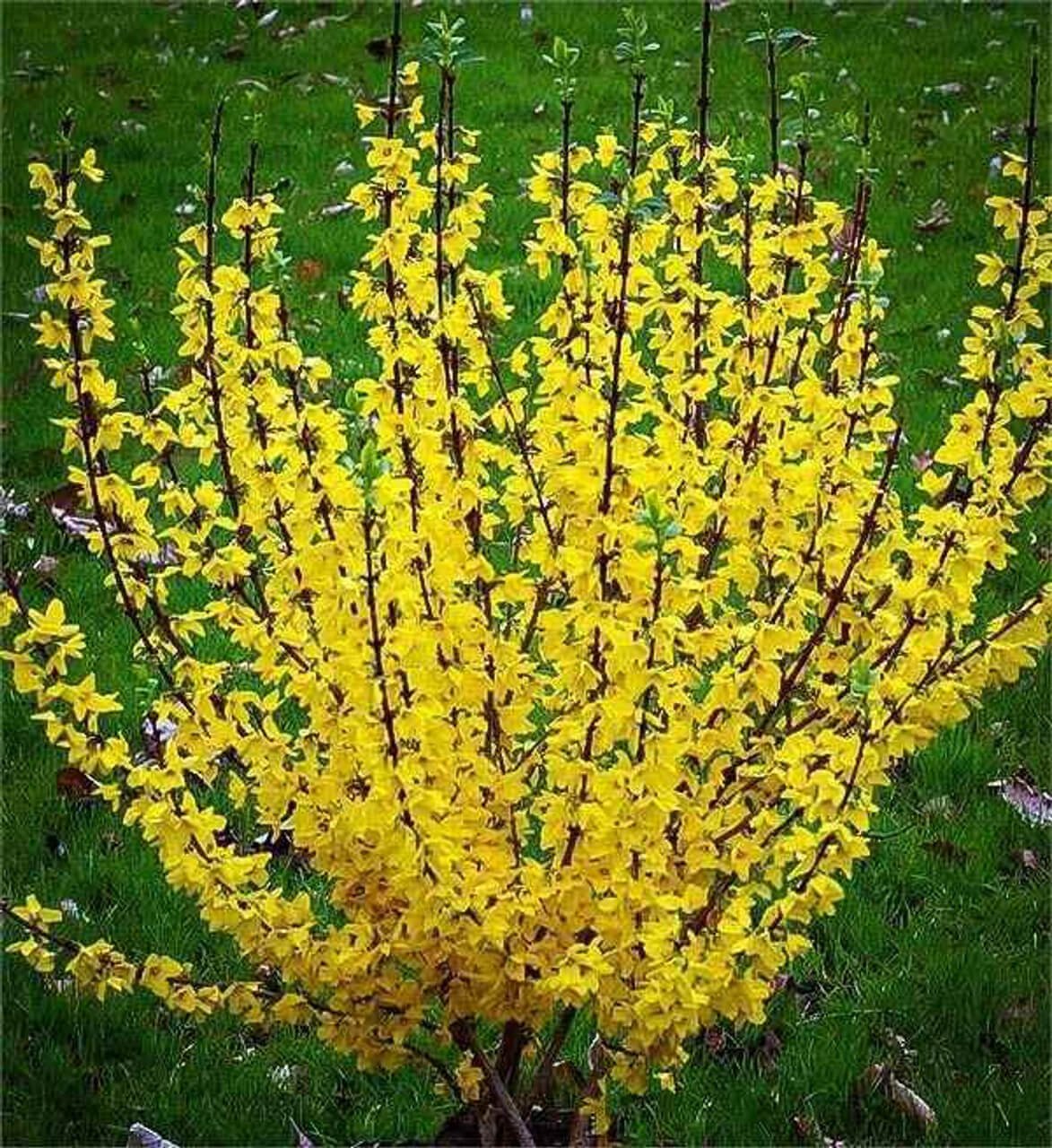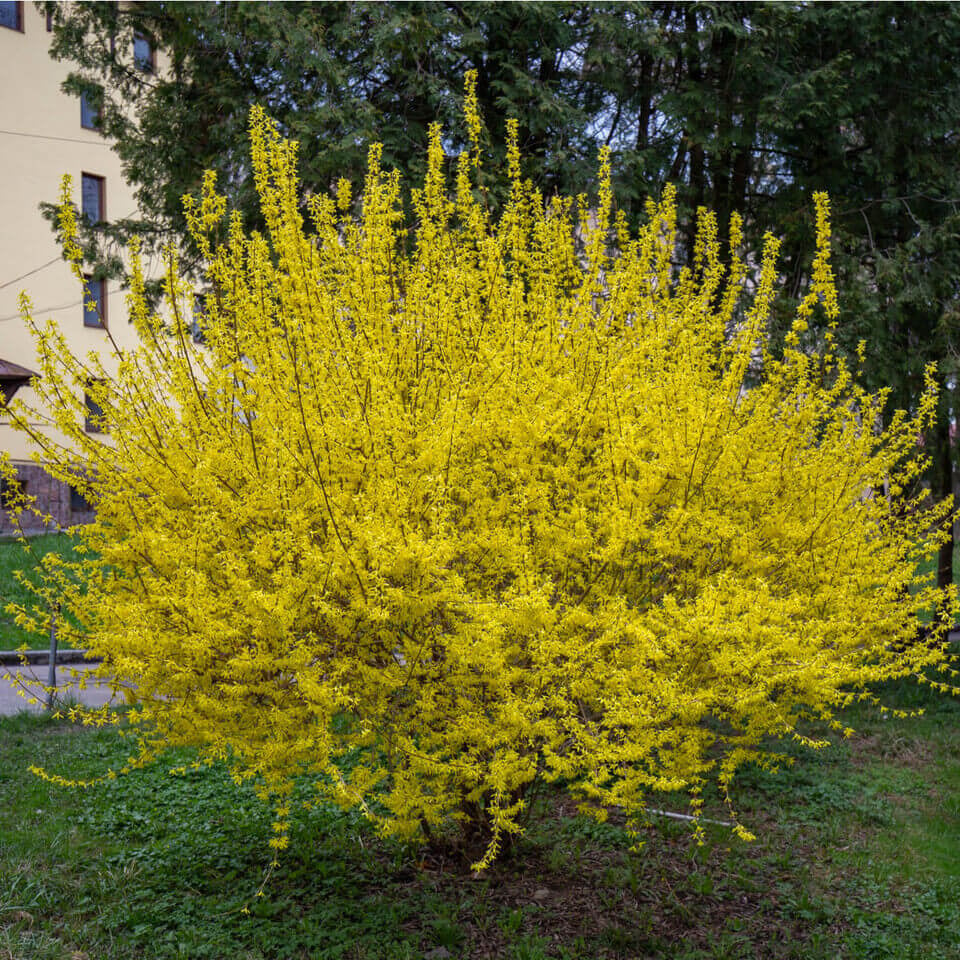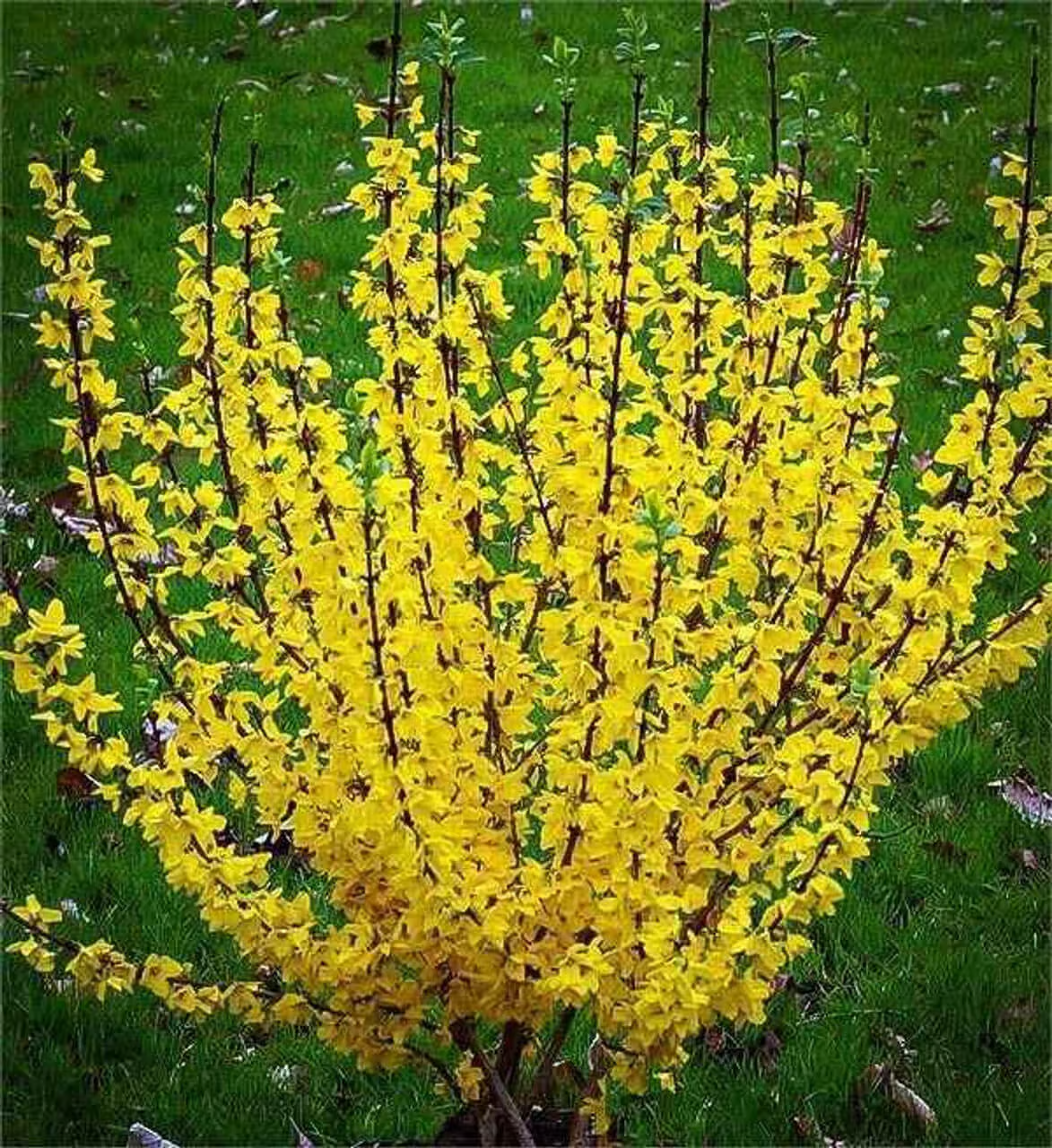



Forsythia
Bright yellow spring flowers
Attracts pollinators and wildlife
Fast-growing for quick privacy
Thrives in
ZONE 4ZONE 5ZONE 6ZONE 7ZONE 8ZONE 9This plant ships:
7-10 Days1 Year Guarantee on all plants
Forsythia - Forsythia x intermedia
Forsythia (Forsythia x intermedia) is a hybrid crossed between Weeping Forsythia (Forsythia suspensa) and Greenstem Forsythia (Forsythia viridissimaI). It is a fast growing, deciduous shrub that is easy to grow. While this plant is not native to North America, it is widely naturalized to parts of the USA.
Flowering begins in early spring before the leaves begin to emerge. Flowers of this shrub are bright yellow, almost neon, and bloom in clusters of 2-6 flowers. They emerge directly along the length of the old growth stems. Due to its early flowering, it is knowns as the harbinger of spring as it is one of the only plants bringing color to the winter landscape.
Plant Details - Forsythia
Family: Oleaceae
Hardiness Zones: 5–8
Light Requirement: Full sun to partial shade
Water Needs: Moderate
Height: 6 - 10 ft
Spread: 6 - 10 ft
Growth Rate: Fast
Bloom Time: Early spring
Flower Color: Bright yellow
Wildlife Value: Limited nectar/pollen for early-season pollinators
The Forsythia has an impressive stature, reaching 10 ft in height, as well as up to 12 ft wide. The stems of this shrub grow in an emphatic manner, extending proudly from the center of the plant while gently arching out and away from the center, giving a fountain-like appearance.
Once leaves emerge, the bush becomes vibrant green as it bursts with lanceolate, finely toothed leaves. In the autumn, these leaves will die off green or with a slight hue of burgundy. This shrub can be planted alone to be a focal point, as part of mixed shrub hedge, or in mass.
Landscape Uses and Maintenance - Forsythia
Full sun to partial shade is the optimal light conditions for this shrub; however, full sun will promote the best flowering. It is a resilient and forgiving shrub, tolerating a wide array of soil conditions, salinity and drought. However, this shrub prefers loose, well-drained soils.
It is virtually pest- and disease-free, however it can sometimes be susceptible to aphids and spider mites. This shrub can develop into a messy mass without regularly pruning. Best practice is the prune directly after flowering. Or you can perform a harsh cut back every 3-4 years by hacking the plant to near ground level.
Noteworthy Characteristics
Early blooms, attracts pollinators, easy to grow.
Plant this showy shrub in front of your kitchen window or along your drive; its lustrous and yellow blooms in late winter will remind you that that spring is one the way. Shop for Forsythia shrubs online at TN Nursery. For 68 years, we have served the landscaping industry and homeowners with specimen plants.
This Is How Your Plants Will Look upon Delivery

Bloom Season
Spring
Bloom/Foliage Color
Yellow
Height at Maturity
Under 10 Feet
Care
Forsythia thrives in well-drained soil and should be watered regularly, especially during dry spells. Trim after blooming to hold its shape and promote new growth. Watch for pests and treat them promptly to keep the plant healthy.
Plant Reproduction
Forsythia spreads through root suckers and stem layering.
Plant bare-root shrubs during the more excellent spring or fall months, from November through April. Dig a hole twice as wide as the root system and slightly more profound than its height. Position the shrub so that the top of the roots is level with the ground, and put back the soil dug over the roots. Apply a 2-3 inch layer of mulch around the base to retain moisture and suppress weeds, ensuring the mulch does not touch the shrub's stem. Water regularly, especially during the first year, to establish strong roots. Prune shrubs as needed to promote healthy growth. In the spring, fertilize with a balanced, slow-release fertilizer suited to the specific needs of the shrub.
Shipping date depends on the date displayed and chosen when you order from the product's page.
We only accept returns on plants verified dead. If you think your plants have died, we offer a 1 year warranty, please use this File a Claim Link to verify dead plants and start with return warranty process.






Profusion of Golden Colors:
Forsythia fills yards with an unmatched profusion of golden colors, covering landscapes in a kaleidoscope of yellow hues that signal spring's arrival.
Soil Stabilization on Sloped Banks:
Forsythia's deep, complex root systems help retain topsoil, making them an excellent choice for soil stabilization on sloped banks.
Natural Privacy Screens:
Their fast growth also makes Forsythia an excellent choice for natural privacy screens. They can be grown as hedges and borders for garden.
Fast Growth and Space Filling:
These fast-growing shrubs can reach a height of two feet in only 12 months. Their rapid growth fills empty spaces in gardens.
Caring Tips
How do I care for my Forsythia?
Each box contains detailed care instructions and information about your product. But here's the basics.
Care Tips
Forsythia thrives in well-drained soil and should be watered regularly, especially during dry spells. Trim after blooming to hold its shape and promote new growth. Watch for pests and treat them promptly to keep the plant healthy.
Light Requirements
Forsythia blossoms in full sun to part shade. It needs 6 hours of bright sun daily for optimal blooming. It will grow well in part shade but may have fewer blooms and a less vibrant color.
Hardy Planting Zones
4 • 5 • 6 • 7 • 8 • 9
Header
Use this content to share information about your store and products.
Frequently Asked Questions
How often should I water my plants?
How do I know if my plant is getting too much or too little sunlight?
What should I do to prepare my plants for winter?
What are the signs that my plant needs fertilizing?
How can I prevent pests from damaging my plants?
How do I choose the right plant for my climate zone?







